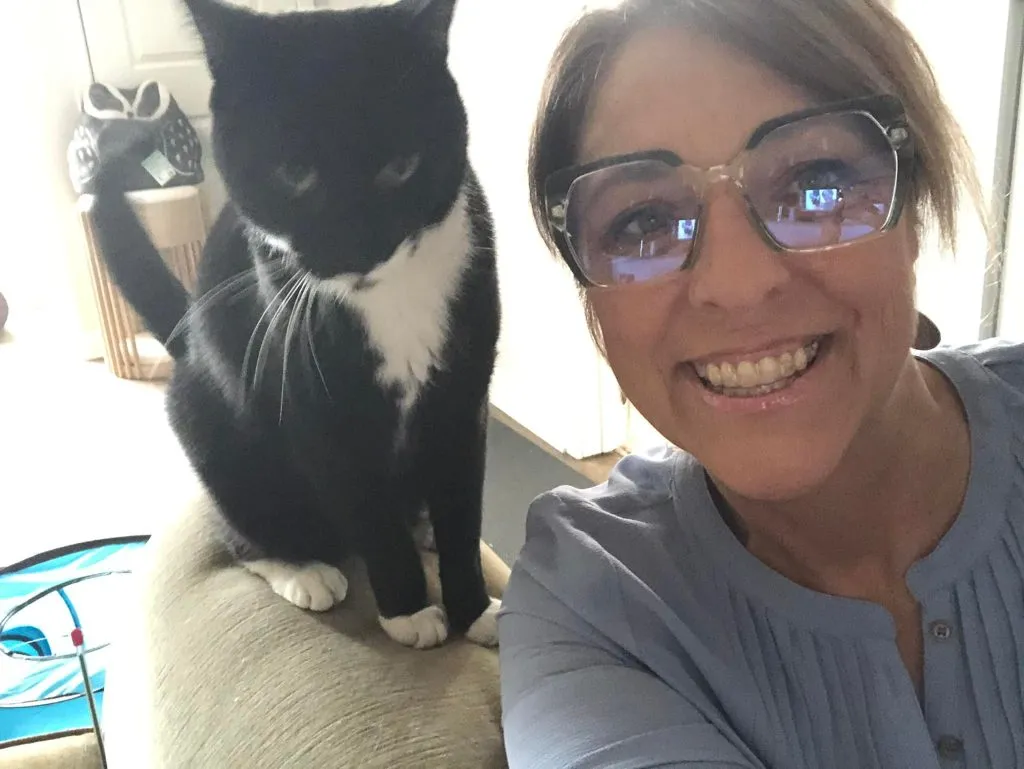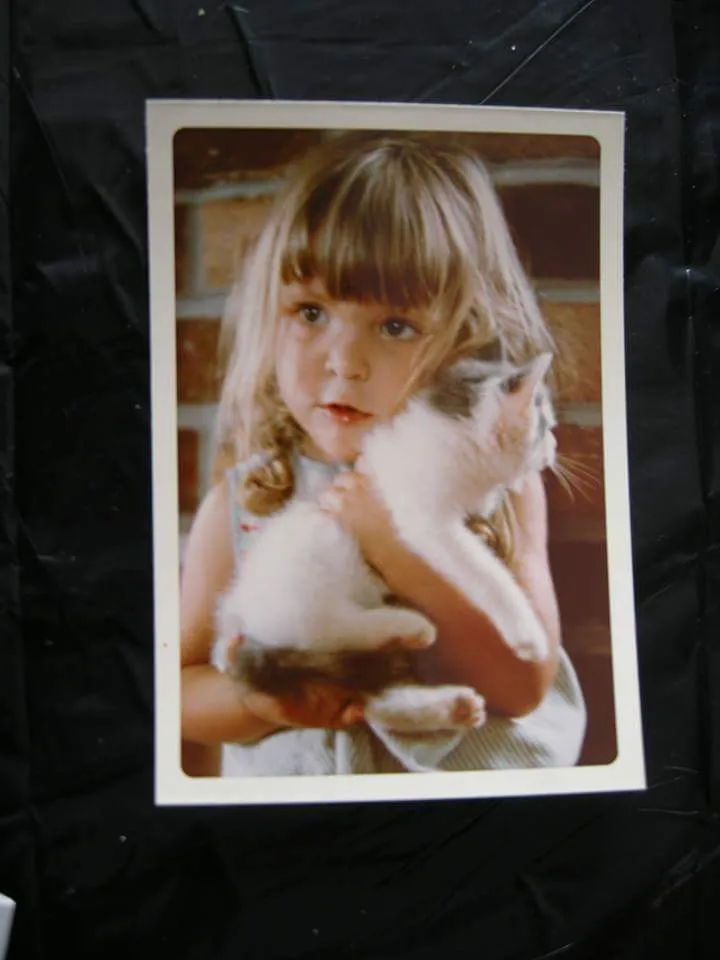All You Need to Know • Kritter Kommunity
If you’re a cat lover like me, you might be familiar with the different breeds of cats that exist. But what about colors, patterns and coats? This post is all about the lilac cat.
Come with me as I unpack this unique cat color.
WHAT IS A LILAC CAT?
Lilac cats are a lighter version of chocolate-colored cats, with a pinkish undertone to their undercoat and nose and paw pads. They are rare from a genetics standpoint, and many breeds recognize them as their own.
Lilac cats are not a separate breed, but rather a color variation that can be found in different breeds of cats. For example, the Lilac British Shorthair cat. The breed is British Shorthair, the color is lilac.
Lilac cats are known for their pale, grayish-purple coat color, which is caused by a dilution of the chocolate gene in cats. While most cat breeds can exhibit this coloration, it is the genetic makeup of a lilac cat that makes them truly unique.
In this article, we’ll take a closer look at lilac cats, including their origin, appearance, and personality. We’ll also explore some interesting facts about their breed history and health. Whether you’re a cat owner or simply a cat enthusiast, you’ll find plenty of fascinating information about these beautiful felines.
Lilac Cat Origins
If you are curious about the history of Lilac cats, this section will provide you with some interesting facts. The Lilac cat is a relatively new breed, and it has a fascinating genetic background.
Genetic Background
Lilac cats are a result of a genetic mutation that causes a dilution of the chocolate gene in cats. This dilution leads to a pale, grayish-purple coat color, which is the defining characteristic of Lilac cats. While most cat breeds can exhibit this coloration, it is the genetic makeup of a Lilac cat that makes them truly unique.
First Recorded Appearance
The first recorded appearance of Lilac cats was in the 1950s, when a breeder named Beryl Cox noticed a cat with a unique coat color. She named the cat Frosty and began breeding it with other cats to produce more Lilac cats. However, it wasn’t until the 1960s that Lilac cats were officially recognized as a breed.
Today, Lilac cats are still relatively rare, and they are not recognized by all cat registries. However, they are beloved by many cat enthusiasts for their unique coat color and gentle temperament.
Lilac cats have a fascinating genetic background and a relatively short but interesting history. If you are considering getting a Lilac cat, it’s important to do your research and find a reputable breeder who can provide you with a healthy and happy kitten.
Physical Characteristics
In this section, we’ll explore the fur color and patterns.
Fur Color and Patterns
Lilac cats have a beautiful, pale, grayish-purple fur color that is caused by a dilution of the chocolate gene in cats. This coloration is rare and makes them truly unique. The fur of lilac cats is usually short and silky, with a fine texture that is pleasant to touch; however it depends on the breed too.
| Gene | Inheritance | Phenotype | Probability |
|---|---|---|---|
| Black | Dominant/recessive | Black | Varies |
| Chocolate | Recessive | Brown | Inherited |
| Dilute | Recessive | Lightening of color | Inherited |
| Lilac | Chocolate + Dilute | Pale lavender | Both inherited |
For a cat to be lilac, it needs to inherit the recessive chocolate gene from both parents and the recessive dilute gene. As the dilution of chocolate results in the lilac color, the probability of a cat being lilac is lower due to the necessity of inheriting these specific recessive genes from both parents. This rarity makes lilac cats a unique and sought-after color variation.
| Question | Answer |
|---|---|
| How do I test for lilac in my Ragdolls? | Lilac in Ragdolls happens when the cat has both the Chocolate (b/b) and Dilute (d/d) genes. |
| How do I test for Lilac in my British Shorthair? | For a British Shorthair to be lilac, it needs either Chocolate (b/b) and Dilute (d/d) genes or Chocolate carrying Cinnamon (b/bI) and Dilute (d/d) genes. |
| How does Dilute work? | The Dilute gene has two versions: D and d. When a cat has DD or Dd, the coat color remains unchanged. But if a cat has dd, the coat color gets lighter: Black turns into Blue, Chocolate becomes Lilac, Cinnamon becomes Fawn, and Red changes to Cream. |
CAN LILAC CATS BE STRIPED?
Ever pondered whether lilac cats prefer solid coats or stripes?
YES! Lilac cat can be striped or solid.
Lilac cats, truth be told, can swing both ways!
But here’s the deal: most of them rock a solid coat.
Why? It’s all about their usual breed origins where the solid lilac look tends to dominate.
Although striped is less common, occasionally these cool cats sport some subtle or not-so-subtle stripes; adding an extra dash of flair to their already captivating appearance.
So, next time you’re chilling with a lilac feline, take a closer peek—you might just meet a solid-colored sweetheart or a stripey sensation, adding to the unique charm of these delightful kitties! 🐾✨
WHAT IS THE DIFFERENCE BETWEEN A DILUTE TORTIE AND A LILAC TORTIE?
Understanding Your Kitty’s Color: Unraveling Lilac Tortoiseshell Cats
When identifying your kitty’s color, recognizing a Lilac Tortoiseshell cat, also termed as a Dilute Tortie, involves observing their coat’s distinct characteristics.
Traditionally, Tortoiseshell cats boast a blend of black and orange or reddish fur. However, Dilute Torties present a variation with paler shades, commonly seen in hues resembling blue and cream.
Lilac Tortoiseshell cats exhibit a remarkable purplish hue, which is notably rare among feline colorations. This distinct coloring sets them apart and makes them a unique and sought-after variation within the Tortoiseshell family.
Kitten Care
Once the kittens are born, it’s important to provide them with proper care. This includes keeping them warm, feeding them a balanced diet, and providing them with regular veterinary care. Kittens should be socialized from a young age to ensure that they develop a good temperament.
When it comes to feeding the kittens, it’s important to provide them with a high-quality kitten food that is specifically formulated for their nutritional needs. Kittens should be fed several small meals throughout the day to ensure that they receive enough nutrients to support their growth and development.
In conclusion, breeding and reproduction are important aspects to consider when it comes to Lilac cats. By understanding the breeding standards and providing proper care for the kittens, you can ensure that your cats are healthy and happy.
Cultural Impact
Lilac cats have been an object of fascination for centuries, and their unique coat color has made them a popular subject in literature, media, and folklore. In this section, we will explore the cultural impact of lilac cats and their significance in different contexts.
In Literature and Media
Absolutely! Here’s a markdown section about the portrayal of the Lilac cat color in the Cheshire Cat:
The Cheshire Cat, renowned for its enigmatic grin and whimsical antics in Lewis Carroll’s Alice’s Adventures in Wonderland, embodies an ethereal allure with its distinctive lilac hue.
Lilac as a Symbol of Mystery and Intrigue
In the realm of feline elegance, the lilac coat of the Cheshire Cat symbolizes an air of mystery and intrigue. Its delicate pastel tones exude a sense of enchantment, captivating curious minds and drawing them into its enigmatic world. This shade, neither vivid nor pale, holds a unique allure that mirrors the elusive nature of the Cheshire Cat itself.
Dynamic and Changing Persona
Much like the shifting nature of the cat’s vanishing acts in Carroll’s tale, the lilac hue of the Cheshire Cat is dynamic. Depending on the light and angle, its color can appear to fluctuate, adding to the enigma surrounding this iconic character. Its coat seems to embody the ever-changing whimsy and unpredictability that define the Cheshire Cat’s personality.
An Unforgettable Presence
The lilac fur of the Cheshire Cat leaves an indelible impression on those who encounter it. Its soft, pastel shade stands out amidst the vibrant Wonderland backdrop, leaving observers both entranced and curious, much like Alice herself.
In essence, the portrayal of the lilac hue in the Cheshire Cat is more than just a color—it’s a representation of enigma, transformation, and an invitation to explore the unknown.
Lilac cats have had a significant cultural impact and continue to fascinate people around the world. Whether you are a cat lover or simply appreciate the beauty of these unique felines, lilac cats are sure to capture your heart and imagination.
Frequently Asked Questions
What breeds feature the lilac coat color?
The lilac coat color is quite rare and unique, and it can be found in several cat breeds. Some of the breeds that feature the lilac coat color include the British Shorthair, Siamese, Persian, and Himalayan. However, keep in mind that not all cats of these breeds will have the lilac coat color, and the color may not be recognized by all cat associations.
How do you care for a lilac British Shorthair?
If you have a lilac British Shorthair, you’ll need to take care of their grooming needs. British Shorthairs have short, dense coats, so they don’t require a lot of grooming. However, you should still brush them regularly to help remove loose hair and keep their coat healthy and shiny. You should also trim their nails regularly, and make sure they have access to fresh water and a healthy diet.
What are the potential health concerns for a lilac cat?
Since lilac is a color, not a breed it depends on the breed of the cat. The cat color does not have as much significance as the breed and overall care the kitty cat will get.
What distinguishes a lilac point cat from other color points?
A lilac point cat is a type of Siamese cat that has a pale, grayish-purple coat color. This color is caused by a dilution of the chocolate gene in cats. Lilac point cats have blue eyes and distinctive “points” on their face, ears, paws, and tail. These points are a darker shade of lilac, and they create a striking contrast against the cat’s pale coat.
Can you suggest some unique names for a lilac-colored cat?
If you’re looking for a unique name for your lilac-colored cat, there are plenty of options to choose from. Some suggestions include Lavender, Lilith, Amethyst, Violet, and Iris. You could also choose a name that reflects the cat’s personality or characteristics, such as Misty, Shadow, or Luna.
Lisa Illman is the Founder of Kritter Kommunity, LLC. She has a tuxedo adult cat and has had him since he was a baby kitten. Before her cat Finnegan, Lisa had had two FIV-positive cats for over a decade. They inspired Lisa to invent a cat enclosure and a portable catio so they could safely sit outside and enjoy fresh air and sunshine. Lisa had a Poodle and a parakeet growing up. She currently loves to pet-sit for her neighbors’ dogs and cats.







Why is Kritter Kommunity Your Trusted Partner?
Our mission at Kritter Kommunity is to promote happy and healthy lives for pets and their owners. We specialize in Barkitecture and designing tips for pet-friendly homes, utilizing the natural instincts of cats, dogs, and small critters to create a home life that pets and people love. From tips on pet care to reviews on pet toys and furniture, we are a go-to source for all things cats, dogs and small critters. Join us in celebrating the joys of pet ownership and providing the best possible lives for our furry friends.
